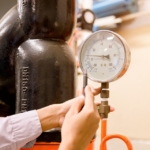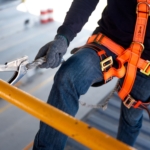What To Do When Gas Readings Are Inconsistent
Getting accurate gas readings is key when working in high-risk environments. Whether it’s a confined space, a plant room or somewhere with limited airflow, knowing the air is safe matters. Gas testing helps check for harmful gases before anyone enters or stays in a space. If the readings are off or bouncing around too much, though, it becomes hard to know what’s really going on, and that can lead to poor decisions or unsafe conditions.
When a gas monitor gives you inconsistent results, it doesn’t always mean there’s a big problem, but it’s a warning not to ignore. Maybe the levels jump up and down for no clear reason, or different devices show different figures in the same spot. Whatever the case, it’s important to stop, figure out why it’s happening, and take the right steps to be sure everyone stays safe. Let’s look at what might cause gas readings to shift and what to do about it.
Understanding Inconsistent Gas Readings
Gas testing checks the air for harmful gases like oxygen deficiency, flammable vapours or toxic chemicals. Before anyone starts work in a confined space or high-risk area, readings help confirm whether conditions are actually safe. When readings aren’t steady, it throws off your ability to make the right call.
Say, for example, you’re using a multi-gas detector in an underground chamber. One moment, everything looks clear. A minute later, the flammable gas reading suddenly jumps, then drops. That sort of change creates doubt and wastes time. Worse, it could either make you leave the space when it’s actually safe or head in when it’s not.
There are three main triggers for unreliable readings, and most of them boil down to either the conditions around you, issues with the equipment, or how the test is carried out.
Common Causes Of Inconsistent Readings
There’s usually more than one reason why gas readings don’t come out right every time. Understanding some of the most common causes helps prevent bigger problems.
1. Environmental Factors
– Airflow or ventilation changes can move gas pockets around, giving different readings from one spot to the next
– Sudden temperature shifts may affect how sensors respond
– Humidity can change the way gases behave or how the monitor reacts to them
2. Equipment Problems
– Sensors degrade over time, especially if they’ve been exposed to extreme conditions
– Monitors that haven’t been calibrated properly may drift off standard ranges
– Damage from moisture, dust or impact can weaken sensors quietly without showing an obvious alert
3. Human Error
– Rushed or skipped warm-up times after switching on the monitor
– Holding the detector too close to a gas source or using it incorrectly in different zones
– Poor record-keeping around maintenance dates or calibration schedules
Once you spot the reason behind a glitchy reading, you’re in a better place to fix it or know when gear needs replacing. That’s why it’s so important to not only trust the gear, but to know how to handle it when it isn’t doing what you expect.
Steps To Take When Readings Are Inconsistent
When gas readings don’t line up or shift without warning, delays and confusion can follow. More importantly, a wrong assumption can put people at risk. Sorting the problem early, without guessing or rushing, makes a big difference. The aim is to trust the reading or know when to question it.
Start with these checks:
– Step back and take a second reading in the same spot with the same device
– Use a second monitor, ideally a different model or brand, to compare results
– Review the last calibration date. If it’s overdue, it may be the root cause
– Make sure the sampling probe or inlet isn’t blocked or dirty
– Move to a different area and test again to see if things shift with location
If problems keep coming up, it’s time to pull the monitor from use and report the issue. It should be looked at by someone trained in how these systems work. Changing batteries, checking sensors or refreshing filters might help, but it’s always safer to hand it off to someone qualified.
Lastly, log everything. Even if it turns out to be a simple fix, notes around when, where and how it happened could help next time. Consistent record-keeping builds a stronger, safer pattern for identifying faults early.
Preventing Future Inconsistent Readings
The best time to deal with equipment failure is before it actually happens. Keeping gear accurate makes everyone’s life easier on the job and avoids delays or risks caused by faulty reads.
Here are a few habits that help reduce problems:
– Stick to a regular calibration schedule. Don’t put it off just because the device seems okay
– Store gas monitors away from heat, moisture or heavy impact
– Check monitors before and after each job. Quick tests can spot obvious faults early
– Train everyone to use, charge and look after the gear properly
– Rotate monitors in use, giving time for inspections or servicing in between
Some workplaces in Perth also run refresher courses, where staff can stay up to date with new equipment or procedures. That way, you’re not relying on someone remembering how they were trained five years ago. Simple upgrades, from bump-testing stations to data logging monitors, can also help ensure your readings reflect the actual air conditions.
Perfect readings every time are tough to promise, but by building smart routines around your detectors, error becomes the exception, not the rule.
Confidence Starts With Training
One of the biggest ways you can stop small issues turning into big ones is through training. When a team knows what to expect, how to test properly and what signs could mean something’s gone wrong, they’re more likely to catch problems before something serious happens.
Gas testing training in Perth gives workers hands-on experience with the same gear they’ll use onsite. It also covers the rules that apply locally, so people don’t miss steps or fall out of line with current safety codes.
The benefits aren’t just for the individual. Training helps lift the whole site’s level of safety. New workers learn the right way from day one, and experienced ones pick up better habits. A confident operator is more likely to act fast when something doesn’t seem right and less likely to brush off unusual readings just to finish a task.
If you’re working in a high-risk environment where air quality matters, dealing with inconsistent gas readings isn’t something to brush aside. Knowing what causes them, how to react quickly and how to limit future issues makes every shift that bit safer. It starts with paying attention and keeps going with the right habits, gear and knowledge.
For teams working in unpredictable or high-risk environments, getting accurate gas readings makes a real difference. Access Unlimited offers practical, hands-on gas testing training in Perth that helps workers build confidence with the tools they’ll be using onsite. Our training focuses on reading conditions clearly, using equipment correctly and knowing when something isn’t right—so your crew can stay sharp and safe on every job.



